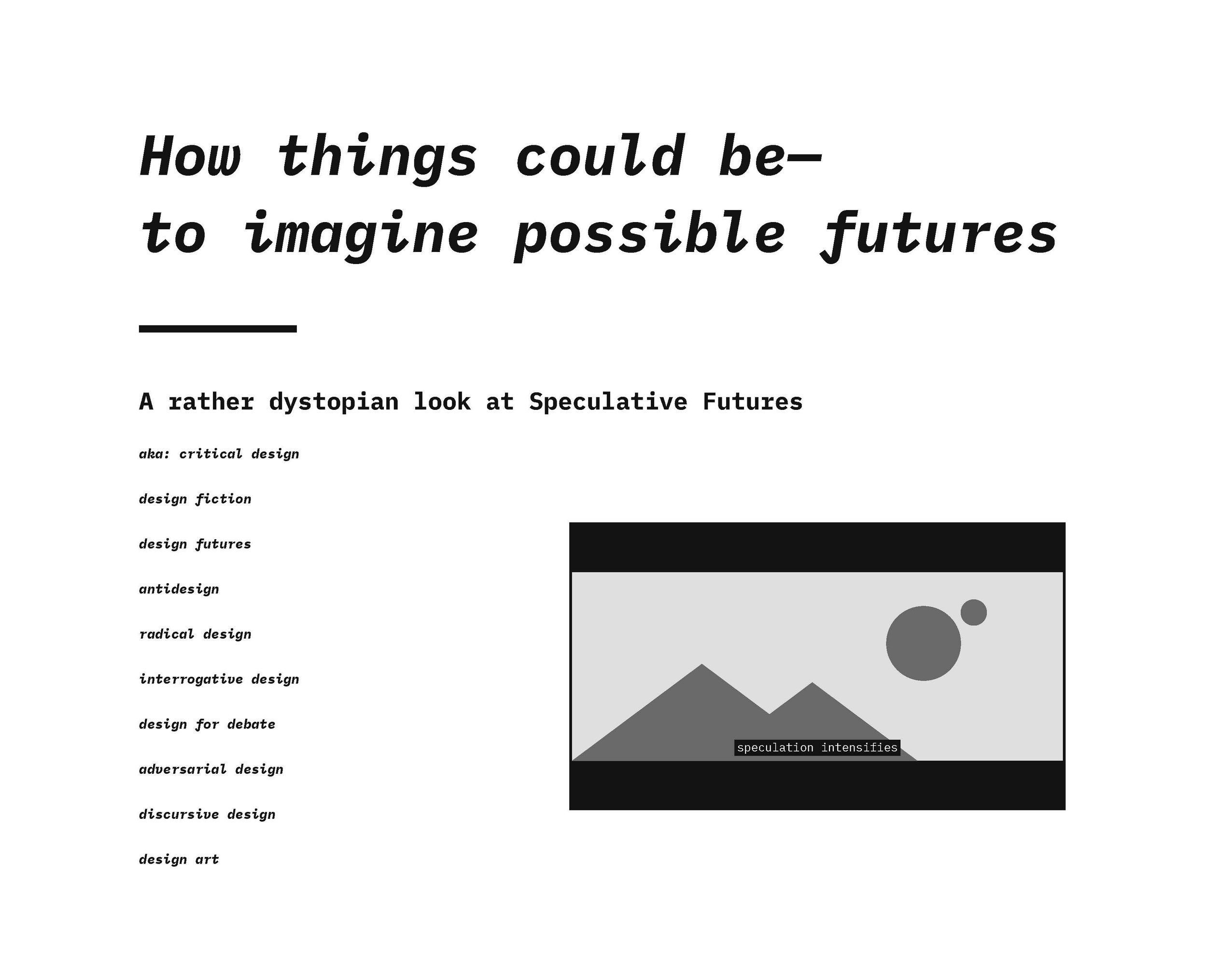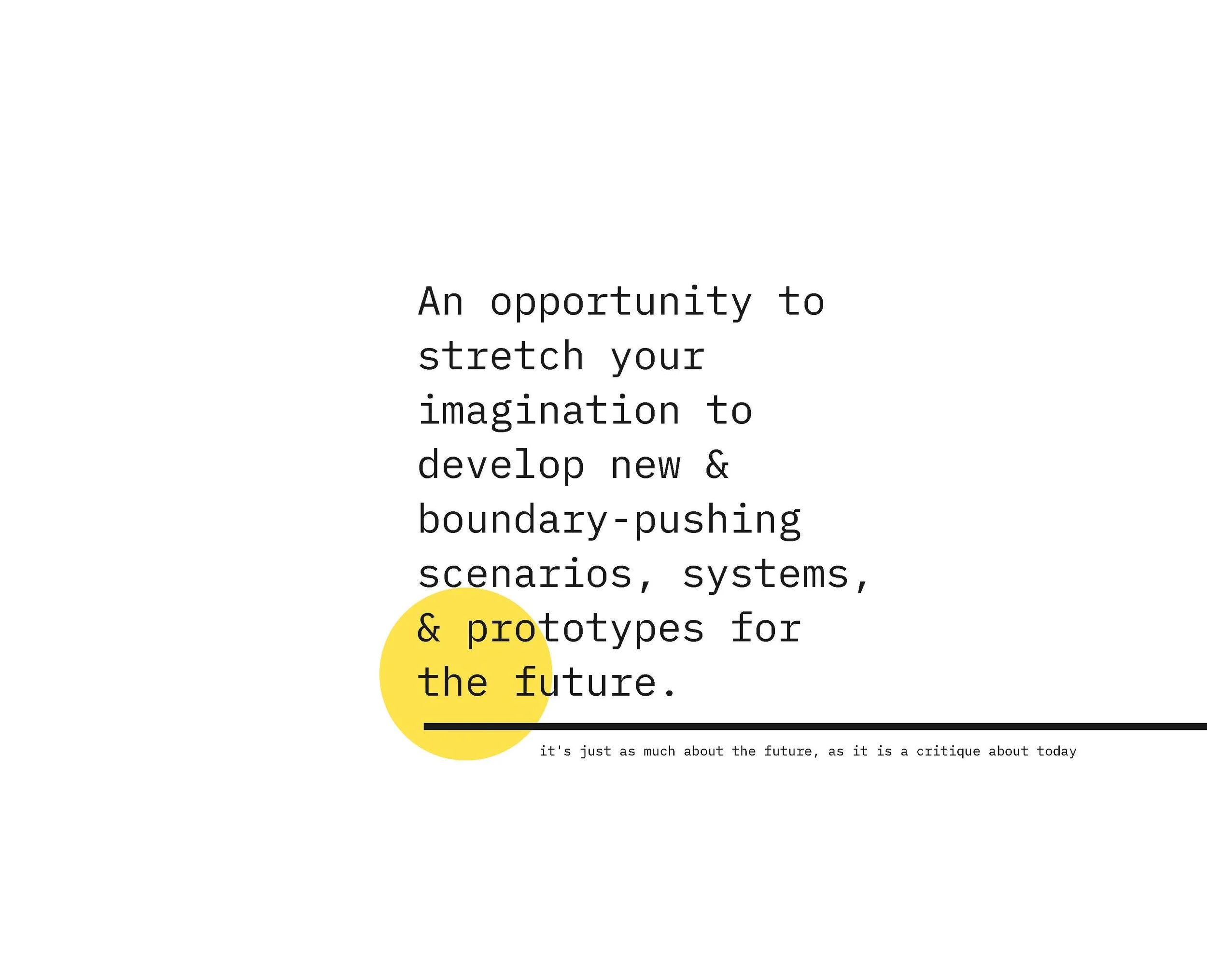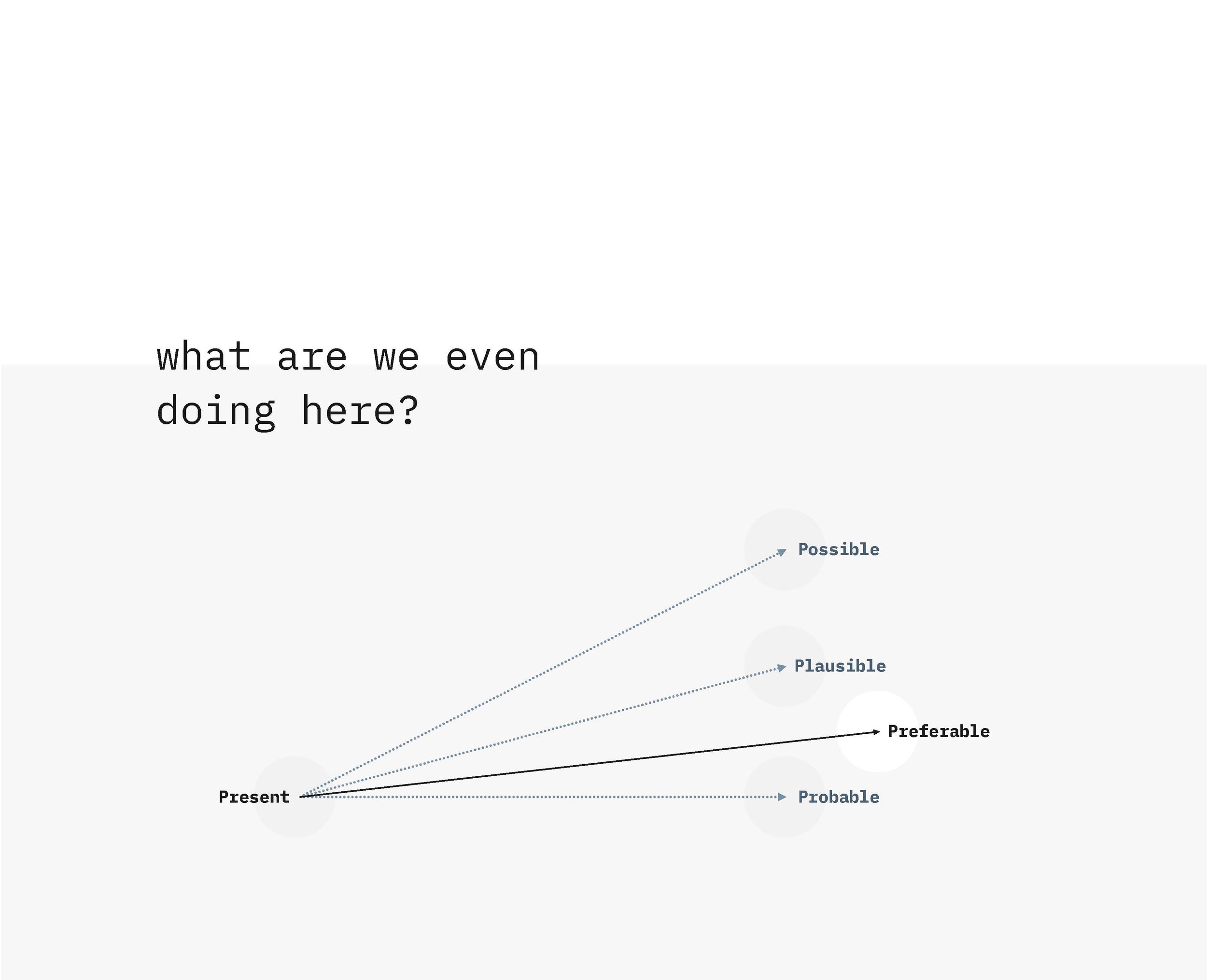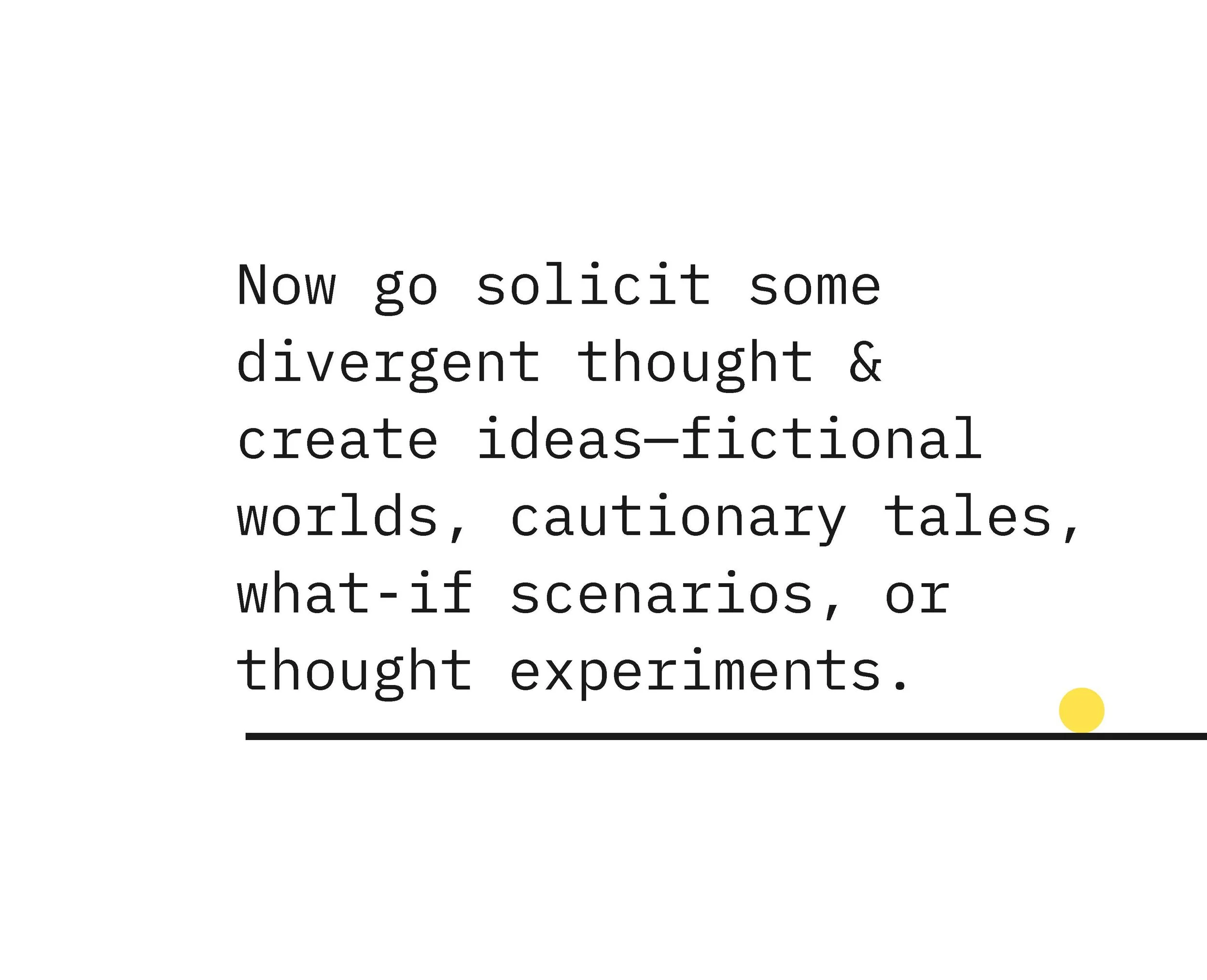Design
For Dystopia
A short speculative design workshop created to introduce my team to the concept of futures thinking and the impact it can have in our collective design process. This exercise was heavily inspired by the books Speculative Everything, Make It So: Interaction Design Lessons from Science Fiction, & Mirror Worlds.
My Role
Lead Designer
Year
2021
Duration
1 Week
Step 1
Introduction
Why Dystopia?
To help drive the concept of home and set the stage for the coming group exercise, I created a quick slideshow to demystify the concept of speculative design and provide some reasoning for the ‘dystopian’ environment I was about to put everyone in (mentally).
By setting the scene for a dystopian landscape, it was quite easy to allow my participants to theorize possible futures not farfetched from our current technological trajectory.
Introducing the Concept
Step 2
Group Exercise
Futures Ideation
Asking participants to create their own future scenarios, together.
But first a few rules…
Groups of Three
Breaking teams up into smaller groups allowed me observe dynamics while creating more dexterous ideation sessions. In retrospect, for the the amount of participants I had, I would likely create 4 groups of 3 to allow for even more rapid sharing of ideas.
Situational Constraints
Each team would find themselves on their respective canvas, and on that canvas were their design constraints broken down into the 3 categories; Environment, Crisis, and Prompt. They were to use these scenarios as world building fodder for when crafting speculative design responses.
Bonus Wrench
An optional, should time allow, section of the canvas was allotted for each team to think thru possible undesired outcomes from their own solutions. This prompt was born as a way to introduce continuous critique and responsible innovation if you will.
Group Results
Group One
Environment: The natural biosphere is all but depleted. Biology is a manufactured commodity.
Crisis: The global food supply is regulated by a single corporation with an aversion to spice.
Prompt: Design a solution that democratizes sustenance that people actually want to eat.
Result: A two-fold solution starting with grassroots flavor enhancer add-ons leading to historical research and equitable bio-splicing education.
Group Two
Environment: There are no jobs, and your economic worth is determined by your social score.
Crisis: Your transactions are predicted by advanced emotion recognition software.
Prompt: Imagine a way to restore free-will and bring back choice to the masses.
Result: A timeline that outlines steps to becoming invisible to the system, establishing micro-colonies, and subverting the ‘Spellcheck’ AI.
Group Three
Environment: Medical advancements dramatically increase human aptitude and life expectancy.
Crisis: The wealthy ruling class can outlive their subjects by generations, but they're ugly as hell.
Prompt: How can an ephemeral majority subvert the will of an eternal minority?
Result: A multi-scenario approach empathizing with the ‘Vampires’ in order to develop either help, cooperate, or fight strategies.
Some insights from the design fiction scenarios above
Limiting imagination
Guardrails were setup to work within plausible scenarios, but specificity also limits ideation. A careful balance of scenario crafting paired with better guidance and workshop setup would be a great next-step for this exercise.
The solution/response lens
Everyone attacks problems differently. Balancing participant personalities, strengths, and disciplines would allow a bit of self governance of ideas from within. I found some groups leaning heavily in the macro solutionizing and others creating wide-angle maps of change over time. Each problem can have infinite numbers of unique outcomes, so if adherence to a given set of parameters is desired over free-form ideation, then setting the appropriate expectations will be needed.
More exercise time
Ideally, 2 or more hours can be allotted to allow for a clearer introduction of concepts, more mature ideas to emerge during ideation, and greater insights to be gathered on the potential harms of those ideas.
Reflection is key
Our brief period of reflection team presentations began to net some very interesting challenges of the proposed responses created. Allowing adequate time for both the individual teams then the larger participant group to create and exchange scenario result responses would elevate and focus the outcome critique as a primary takeaway from the exercise.
Testing different tools
This exercise was created within Miro and utilized the collaborative nature of the tool to capture ideas. However, for some people, this free-form idea sketching can be daunting and finding the right method for capturing or displaying your thoughts may not come as easy as others. Exploring different mediums and formats would be a great way to gather preferred usage data for future revisions.
Bonus Scenario Content
In prepping for the workshop, I brainstormed many possible scenarios to help provide some guardrails for our intrepid future explorers. Below are some of those scenarios. I would like to explore a D&D dynamic where representatives (DMs) from each team could help shape each scenario instead of a single person (me) dictating the worlds each team must occupy.
















